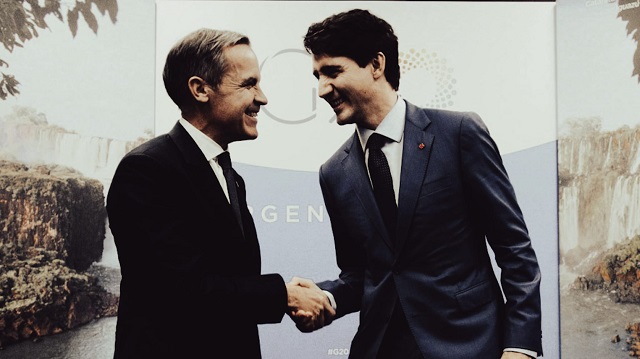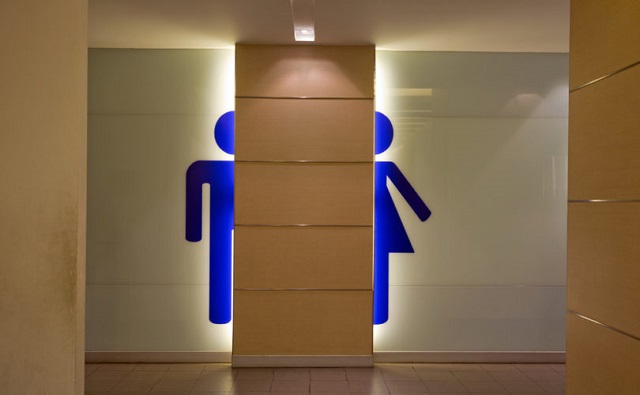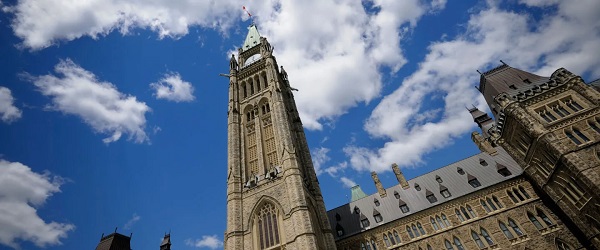Business
Federal government should cut red tape to spur economic growth
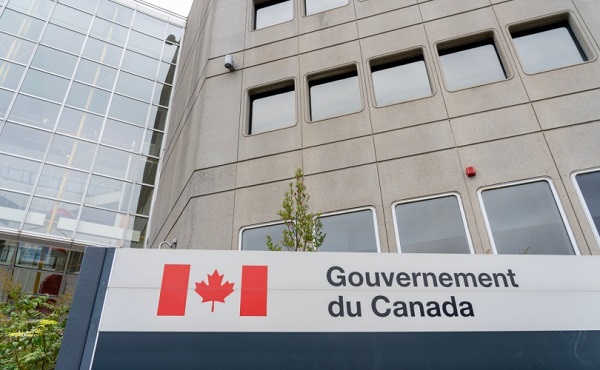
From the Fraser Institute
By Julio Mejía and Elmira Aliakbari
As Parliament resumes, Prime Minister Mark Carney should recognize a simple fact—Canada has a regulation problem, which discourages business investment and stifles economic growth. And if we don’t solve the problem, we risk falling further behind the United States.
Since his re-election in November, President Donald Trump has vowed to cut “job-killing” red tape, promised to eliminate 10 regulations for each new regulation, and directed federal agencies to halt the enforcement of burdensome and potentially unlawful regulations. To amplify these efforts, the Department of Government Efficiency (DOGE) launched a website tracking the regulatory complexity across government agencies in Washington.
Meanwhile in Canada, Canada’s regulatory burden is growing. CFIB estimates that in 2024 businesses spent 735 hours on regulatory compliance—58 hours more than in 2020. Meanwhile, the annual cost of dealing with regulations jumped from $45.4 billion in 2020 to $51.5 billion in 2024 (inflation-adjusted).
This growing regulatory burden isn’t just costly—it also creates uncertainty, erodes productivity by forcing business to spend time and resources navigating the bureaucracy, and ultimately deters investment.
Not surprisingly, business investment in Canada—measured on a per-worker basis—has plummeted by 33 per cent, from $18,600 in 2014 to about 14,000 in 2024 (inflation-adjusted). Moreover, according to renowned economist Jack Mintz, from “2016 through 2022 close to $225 billion in capital was lost as more direct investment left the country than came here.”
Even before Trump’s deregulatory campaign, the 2024 OECD Regulatory Restrictiveness Index ranked Canada as the most restrictive country for foreign investment in both the G7 and North America—behind the United States and Mexico—due to regulatory barriers in sectors such as telecommunications, agriculture, mining and finance.
Red tape is also hurting investment in Canada’s energy sector, our main source of exports. According to the latest survey of oil and gas investors, 68 per cent of respondents said uncertainty about environmental regulations deters investment in Canada’s oil and gas sector compared to 41 per cent in the U.S. And 54 per cent said Canada’s regulatory duplication and inconsistencies deter investment compared to only 34 per cent for the U.S. (This survey was also conducted before Trump’s regulatory rollbacks.) Investment is key to increasing incomes and improving living standards; it provides workers with the tools and technology to produce more and better goods and services. Less investment also means less money to develop new projects, infrastructure and technologies, and consequently fewer jobs and less economic opportunity for Canadians across the country.
While Parliament was off for months, the Trump administration was busy cutting red tape to create a more welcoming investment climate. Now, the new Carney government should adopt its own reform agenda to reduce regulations and spur economic growth, for the benefit of Canadian workers and their families.

Julio Mejía

Elmira Aliakbari
Business
Bank of Canada Flags Challenges Amid Absence of Federal Budget
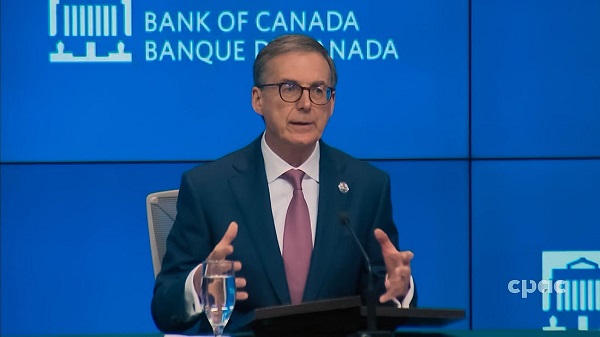

 Dan Knight
Dan Knight
Governor Tiff Macklem signals the central bank is flying blind as Mark Carney’s Liberal government withholds fiscal plans, leaving Canadians to face rising prices and economic uncertainty.
The Bank of Canada—yes, the people in charge of stabilizing your currency, protecting your savings, and guiding the economy through the storm—held a press conference. The takeaway? They have no idea what’s going on.
If you missed it, Governor Tiff Macklem stood at the podium and told Canadians, with a straight face, that the Bank is keeping interest rates unchanged at 2.75%. Now, if you’re expecting that decision to come with some clarity, a plan, maybe even a roadmap for the months ahead—don’t hold your breath.
Why? Because Macklem said the Bank’s navigating ‘unusual uncertainty’ from U.S. trade moves, and they’re too unsure to pin down a forecast. Instead, they’re waiting for more numbers to make sense of the mess.
Just pause and think about that for a second. The central bank of one of the wealthiest nations on Earth—tasked with steering the economy—is flying blind.
But don’t worry, we were told. A rate cut might come in July. Maybe. Depending on how inflation behaves. Depending on how the economy holds up. Depending on a whole list of things no one can actually predict right now. Macklem says it depends on inflation being “contained.” But look around—consumer spending is falling, housing is slowing down, and people are losing jobs in sectors tied to trade. And he knows it.
He said, “The second quarter is expected to be much weaker.” Why? Because the growth we saw earlier this year was a mirage. Canadian companies rushed to export goods before U.S. tariffs hit. That inflated Q1 GDP to 2.2%. Now the adrenaline is gone and reality is setting in.
He didn’t say we’re in trouble. But he didn’t need to. When your central banker says growth was “pulled forward” and Q2 will be “much weaker,” he’s telling you the economy is already running on fumes.
And then there’s inflation. Now, according to the headlines, inflation dropped to 1.7% in April. Sounds good, right? Until you look at why. The reason inflation dropped is because the federal government eliminated the carbon tax, which temporarily lowered gas prices. That policy change alone knocked 0.6 percentage points off inflation. Not because goods got cheaper—because the tax man backed off for once.
Meanwhile, core inflation—the kind that actually matters—went up. Higher food prices, rising goods prices, supply chain costs—it’s all hitting Canadian businesses and families right now. Macklem even said it himself: “Underlying inflation could be firmer than we thought.”
So what does the Bank do when prices are rising for the wrong reasons and growth is falling for the right ones? Apparently, they wait. They gather “intel” from business owners and talk about “soft data.” That’s the technical term now: soft data.
But the real kicker—what’s actually driving a lot of this chaos—is U.S. trade policy. Tariffs are back. Yes, tariffs on Canadian steel and aluminum were doubled again. And Macklem admitted that unpredictability is the biggest threat we’re facing. He said: “The trade conflict initiated by the United States remains the biggest headwind facing the Canadian economy.”
And what has Canada done to protect itself from that risk? Absolutely nothing.
In fact, Macklem came right out and admitted it. He said Canada’s overdependence on U.S. trade has been obvious for years. Here’s the quote:
“Canada’s trade is very concentrated with the United States. Look, it’s always going to be concentrated with the United States… but that doesn’t mean we can’t diversify our trade.”
So the solution has been obvious for decades. Diversify our exports. Strengthen our own internal market. Get serious about reducing interprovincial trade barriers—yes, those still exist in this country. But none of it happened. None of it. Not under Trudeau. Not under Chrystia Freeland. And certainly not under the new “caretaker” prime minister, Mark Carney—Trudeau’s old global finance buddy.
The Deafening Silence from Ottawa: No Budget, No Plan, No Leadership
Now, let’s talk about what Tiff Macklem didn’t say—but might as well have.
At a time when Canadians are facing real economic stress—on housing, food, jobs, and savings—the Liberal government under Mark Carney has failed to table a federal budget. Let that sink in. We’re halfway through 2025, inflation is shifting, trade policy is in turmoil, and the federal government has not provided a single fiscal blueprint.
This isn’t just a minor oversight. In a presser filled with caution, hedging, and uncertainty, Macklem was asked point-blank how the lack of a spring budget is affecting the Bank’s ability to do its job. His answer? Chilling in its understatement:
“Whatever announcements come out of the government that are… concrete, clear plans with numbers on them—we will take those on board.”
But here’s the thing: there are no numbers. There are no “concrete” plans. There is no spring budget. Which means the Bank of Canada is operating without a fiscal anchor.
And that’s not a partisan jab. That’s a direct acknowledgment from the central bank governor. Monetary policy doesn’t exist in a vacuum. It relies on fiscal policy—how much Ottawa plans to spend, what kind of debt it’s taking on, whether it’s injecting or withdrawing demand from the economy. Without that information, the Bank is effectively being asked to navigate blindfolded.
Macklem was careful, as central bankers always are, but he sent a signal to anyone paying attention: the absence of fiscal clarity is a problem. In his words, it “complicates monetary policy planning.” That’s about as blunt as a central banker gets.
Yet in a moment of unintended honesty, he added this:
“To be frank, the budget is not the biggest source of uncertainty… It’s U.S. tariffs.”
Well, sure. America’s economic unpredictability is real. But what Macklem didn’t say—but we all know—is this: Canada’s lack of internal leadership is a close second. And that’s the part Ottawa doesn’t want to talk about.
And here’s the part that’s impossible to ignore, even if every outlet in this country refuses to say it: Mark Carney knows better.
He used to run central banks. That’s his entire résumé. He understands, better than anyone, that monetary policy doesn’t function in a fiscal vacuum. He knows the Bank of Canada requires a federal budget to plan ahead. He knows you can’t forecast inflation or economic activity if the federal government won’t even tell you how much it plans to spend, borrow, or tax. That’s not some fringe economic theory, that’s Monetary Policy 101.
And yet, despite knowing all of this, Carney is choosing not to deliver a budget. He’s actively keeping the Bank of Canada in the dark. Why?
Well, maybe it’s because he doesn’t want to show you the numbers. Because the numbers are bad. Because the spending is out of control. Because the debt is spiraling. Because if he puts it all on paper, if he gives us the hard data, then suddenly, the opposition can do what it’s supposed to do: hold his government to account.
And maybe, just maybe, Carney doesn’t want that. Not yet. Not so early in his reign as Trudeau’s heir. He doesn’t want the Conservative Party pulling apart his economic plan, and he certainly doesn’t want the Canadian people realizing that we are not collecting retaliatory tariffs on U.S. goods, even as the Americans hammer us again with steel and aluminum levies.
He doesn’t want you to see the imbalance. Because if you did, if the average Canadian saw how weak and passive this country has become in the face of American economic aggression, you’d be furious. You’d demand answers. You’d demand change.
But instead, its all, “elbows down.” Quietly filtered out of the official narrative. No plan, no numbers, no debate—just vague promises, half-hearted reassurances, and a press conference where your central banker admits he’s guessing.
And you, the ordinary Canadian, are stuck with the consequences. You feel it every time you go to the grocery store. Food prices are still climbing. The latest inflation data shows that even as headline numbers tick down, your groceries are getting more expensive. Your paycheque isn’t going as far. And nobody in power seems to care enough to fix it.
So here’s the truth: the system is rigged. Not in some conspiratorial way, but in the most obvious, bureaucratic, cowardly way imaginable. Those in charge know the damage they’re causing. They just don’t want to be blamed for it.
And as always, it’s the people who work, save, and pay taxes—the people who still believe in this country—who get left holding the bag.
So the next time they tell you “everything is under control,” ask yourself: whose hands are on the wheel?
Because right now, it sure doesn’t look like anyone is driving.
Good-day, Canada.
Subscribe to The Opposition with Dan Knight .
For the full experience, upgrade your subscription.
Business
This Sunday, June 8, is Tax Freedom Day, when Canadians finally start working for themselves

From the Fraser Institute
By Milagros Palacios, Jake Fuss and Nathaniel Li
This Sunday, June 8, Canadians will celebrate Tax Freedom Day, the day in the year when they start working for themselves and not government, finds a new study published by the Fraser Institute, an independent, non-partisan Canadian public policy think-tank.
“If Canadians paid all their taxes up front, they would work the first 158 days of this year before bringing any money home for themselves and their families,” said Jake Fuss, director of fiscal studies at the Fraser Institute.
Tax Freedom Day measures the total annual tax burden imposed on Canadian families by federal, provincial, and municipal governments.
In 2025, the average Canadian family (with two or more people) will pay $68,266 in total taxes. That’s 43.1 per cent of its annual income ($158,533) going to income taxes, payrolltaxes (including the Canada Pension Plan), health taxes, sales taxes (like the GST), property taxes, fuel taxes, “sin” taxes and more.
Represented as days on the calendar, the total tax burden comprises more than five months of income—from January 1 to June 7. On June 8th—Tax Freedom Day—Canadians finally start working for themselves, and not government.
But Canadians should also be worried about the nearly $90 billion in deficits the federal and provincial governments are forecasting this year, because they will have substantial tax implications in future years.
To better illustrate this point, the study also calculates a Balanced Budget Tax Freedom Day—the day of the year when the average Canadian finally would finally start working for themselves if governments paid for all of this year’s spending with taxes collected this year.
In 2025, the Balanced Budget Tax Freedom Day won’t arrive until June 21. “Tax Freedom Day helps put the total tax burden in perspective, and helps Canadians understand just how much of their money they pay in taxes every year,” Fuss said. “Canadians need to decide for themselves whether they are getting their money’s worth when it comes to how governments are spending their tax dollars.”
Tax Freedom Day for each province varies according to the extent of the provincially and locally levied tax burden.
2025 Provincial Tax Freedom Days
Manitoba May 17
Saskatchewan May 31
British Columbia May 31
Alberta May 31
Prince Edward Island June 2
New Brunswick June 4
Ontario June 7
Nova Scotia June 10
Newfoundland & Labrador June 19
Quebec June 21
CANADA June 8
Canadians Celebrate Tax Freedom Day on June 8, 2025
- In 2025, the average Canadian family will earn $158,533 in income and pay an estimated $68,266 in total taxes (43.1%).
- If the average Canadian family had to pay its taxes up front, it would have worked until June 7 to pay the total tax bill imposed on it by all three levels of government (federal, provincial, and local).
- This means that Tax Freedom Day, the day in the year when the average Canadian family has earned enough money to pay the taxes imposed on it, falls on June 8.
- Tax Freedom Day in 2025 comes one day earlier than in 2024, when it fell on June 9. This change is due to the expectation that the total tax revenues forecasted by Canadian governments will increase slower than the incomes of Canadians.
- Tax Freedom Day for each province varies according to the extent of the provincially levied tax burden. The earliest provincial Tax Freedom Day falls on May 17 in Manitoba, while the latest falls on June 21 in Quebec.
- Canadians are right to be thinking about the tax implications of the $89.4 billion in projected federal and provincial government deficits in 2025. For this reason, we calculated a Balanced Budget Tax Freedom Day, the day on which average Canadians would start working for themselves if governments were obliged to cover current expenditures with current taxation. In 2025, the Balanced Budget Tax Freedom Day arrives on June 21.
-
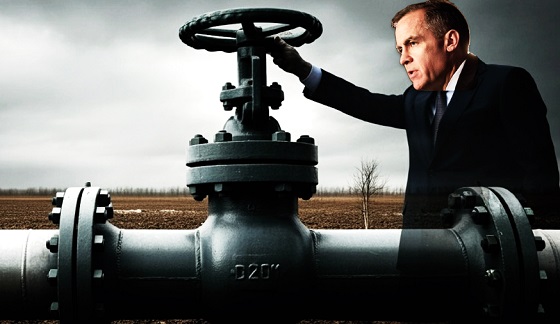
 Business1 day ago
Business1 day agoCarney’s Energy Mirage: Why the Prospects of Economic Recovery Remain Bleak
-

 Alberta2 days ago
Alberta2 days agoAlberta Sports Hall of Fame to Induct Class of 2025
-
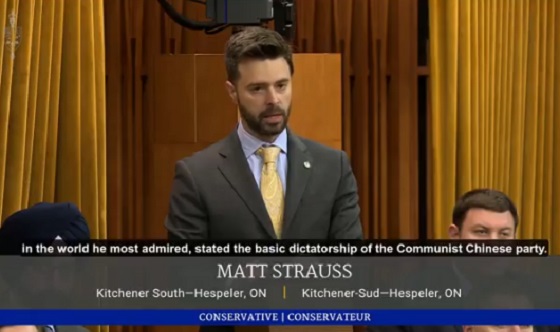
 National1 day ago
National1 day agoCensured doctor who’s now a Conservative MP calls COVID mandates ‘full Communism’
-

 Censorship Industrial Complex1 day ago
Censorship Industrial Complex1 day agoBC nurse faces $163k legal bill for co-sponsored a billboard reading, “I [heart] JK Rowling.”
-
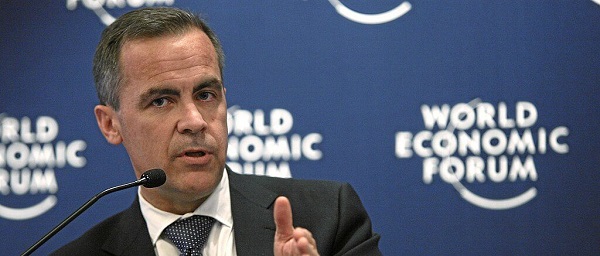
 Daily Caller1 day ago
Daily Caller1 day agoLiberals Embrace Islamic Extremism In Canada
-

 Business24 hours ago
Business24 hours agoThis Sunday, June 8, is Tax Freedom Day, when Canadians finally start working for themselves
-

 Censorship Industrial Complex22 hours ago
Censorship Industrial Complex22 hours agoLegal warning sent to Ontario school board for suspending elected school council member
-

 Fraser Institute1 day ago
Fraser Institute1 day agoHealth-care lessons from Switzerland for a Canada ready for reform





